JDuring your kitesurfing lessons you have probably already experienced that kitesurfing equipment is super important. You can't really do anything without a harness and a warm wetsuit is not a superfluous luxury. In addition, kitesurfing equipment also offers protection. Without neoprene shoes you cannot actually go on the water at some kite surfing locations. And a wetsuit with long legs and sleeves doesn't just provide insulation. No, it also protects the arms and legs from sand chafing. We explain what you need in terms of kitesurfing equipment and what you should pay attention to when purchasing it.
Contents kitesurfing equipment
Trapeze or harness
A kitesurf trapeze or harness is available in different shapes and sizes. The right harness should feel like a measuring suit: an extension of your body. That is why it is important to always fit a harness in the store. It is one of the most important elements of the kiteboarding equipment. Even if the size charts are so clear. You must have fitted a trapeze. In kitesurf shops you can almost always hang with the trapeze on an attachment point as if you are hanging on the kite. This way you can feel the differences and see which harness suits you. Most important is that the hook does not rise when you hang in the trapeze. This can be unpleasant for your ribs or breasts.
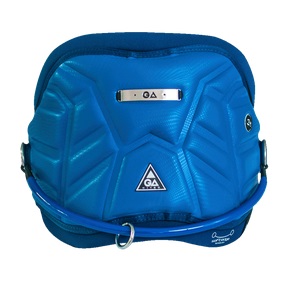
Hip trapeze
A hip harness suits the kite surfers who love the kitesurf riding styles freeride and freestyle. Kite surfing starts for the novice kite surfer with the freeride riding style. This stands for a fun, uncomplicated kitesurfing session where the kite surfer does what he likes at that moment. This can be anything: from cruising, kite surfing through the surf and trying to break some waves, jumping to doing cool tricks. A hip trapeze is also nice to use in the waves.
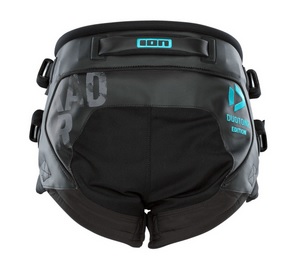
Sit trapeze
A sitting trapeze is put on like a pair of pants where there are straps around the legs that are connected to the trapeze on the hips. A sitting harness provides support and cannot actually slide up. The hook is a lot lower than with a back harness. Because of this lower center of gravity you can really hang in the trapeze and this is comfortable if you mainly want to cruise. A sitting harness is also less susceptible to injury to the back, for example, than a hip harness that actually pulls the back continuously.
Which kitesurf harness suits you?
As a kitesurfing novice looking for kitesurfing equipment that suits you, you do not necessarily have to start with a sitting harness. But if you mainly plan to go cruising, a seat harness can be very comfortable. You really hang in the trapeze and that gives a lot of rest to the back. Do you want more freedom of movement and do tricks. Then a hip harness is the best harness for you.
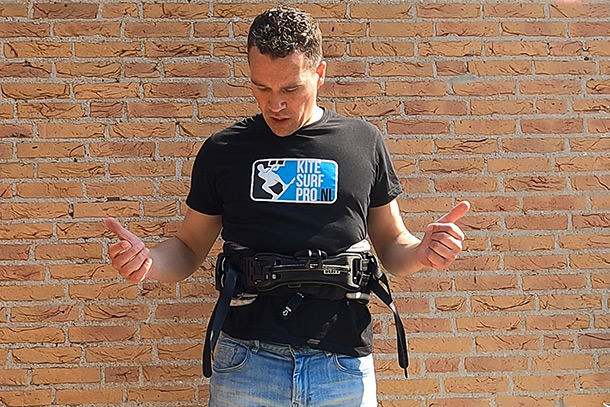
Wetsuit
Without a neoprene wetsuit you can cool down very quickly in the cold water of the Netherlands. The days on which you can go out on the water in the Netherlands in summer without a wetsuit can often be counted on one hand. That is why a wetsuit is also an important piece of kitesurfing equipment. Neoprene wetsuits come in many different shapes and sizes.
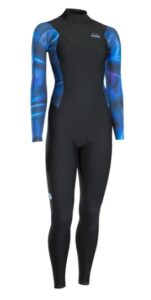
Best wetsuit
In general it applies; the thicker the wetsuit, the warmer it is. However, the quality of neoprene varies a lot. Where we used to go out on the water with double wetsuits in the cold to create extra layers and thus insulation, this is no longer of this time. The best wetsuits nowadays are so good that they can be regarded as a kind of hybrid undergarment and wetsuit in one. Due to the combination of a lining and different types of high-quality material, sometimes even graphene, the best wetsuits are made up of a combination of layers. A lining can be recognized by a fur on the inside. This is to keep your body nice and warm.
Thickness wetsuit
A general indication is that in the summer you get along well with a wetsuit of 4/3 mm. In the spring and autumn you need a 5/4 mm and in the winter even thicker, for example 5/5 mm or even 6/4/3 mm. Read more explanation and what thickness wetsuit you need at what time of year.
Wetsuit also offers protection
A neoprene wetsuit also provides protection. So if you regularly do a belly slide in the surf or on the beach, a wetsuit with long legs and sleeves is not a superfluous luxury. If you have a hole or tear in your neoprene wetsuit, you can often still do this repair with special neoprene glue.
Gloves and a cap
You need gloves when it gets really cold. The same goes for a cap. For example if you go kite surfing with a cold wind from the north in the winter and it is around 4 degrees. These are the moments when some kitesurf fanatics still go out on the water. The rest stay at home on the couch or with a cup of hot chocolate with whipped cream in the restaurant. There are special neoprene kitesurf gloves for sale: with a thin neoprene layer in the palms so that the bar feeling remains as good as possible. Pay attention to a cap that belongs much less. Be aware of this and keep looking around you.
Neoprene jacket or windbreaker
A neoprene jacket or windbreaker over your wetsuit also provides extra insulation. On the coldest days, a jacket over your wetsuit will make your session a lot more pleasant. It is kitesurfing equipment that you definitely do not use all year round. Normally you feel the radiant cold on your wetsuit on cold days. The outside of the wetsuit is therefore ice cold. With a jacket over your wetsuit you still have an extra layer so that the layer between the wetsuit and the jacket feels warmer. You only feel this when you take off the jacket. Then it immediately feels a lot colder on the chest and neck.
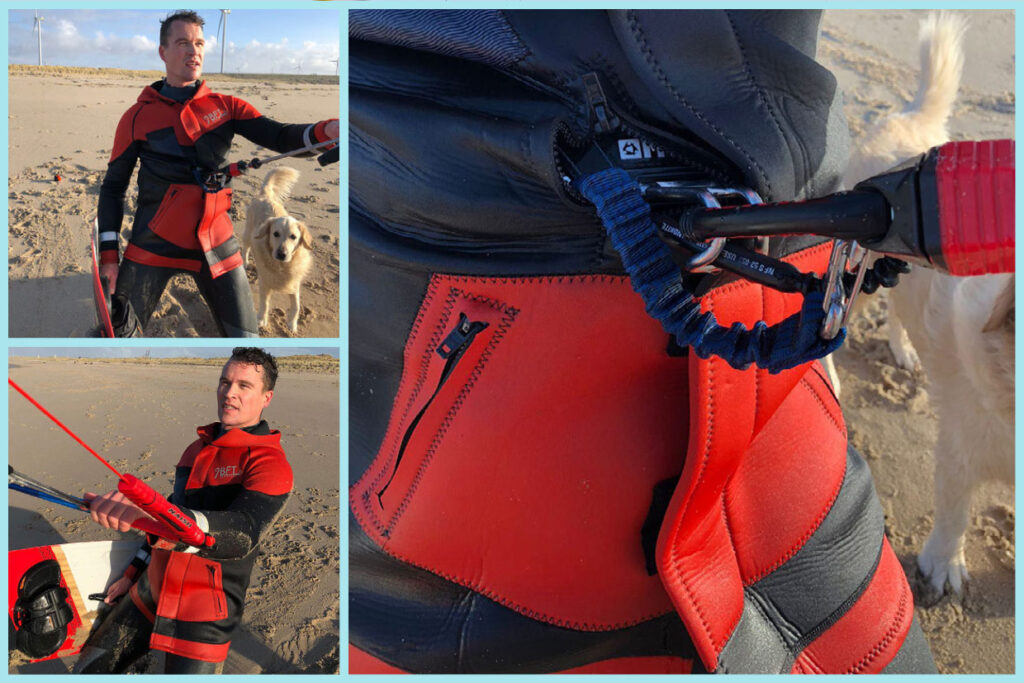
Neoprene shoes
Neoprene shoes are not an unnecessary luxury in the fall, winter and spring. The rule of thumb is that at a water temperature of approximately 10 degrees, the shoes are put on. When it is the time of year to sail with shoes again, it always takes some getting used to. After all, nothing equals kite surfing with bare feet. In addition, if you go kite surfing with shoes, you also have to increase your foot straps a bit. Neoprene shoes are also an absolute must if the surface contains a lot of shells, stones and, for example, coral.
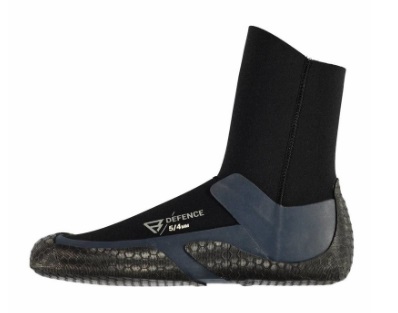
Earplugs: avoid a surfer's ear
In the cold months, special earplugs are recommended to reduce the risk of a surfer's ear can counteract. A surfer's ear, also called exostosis, may sound a bit strange or dull, but it really exists. Due to the drop in temperature, think of autumn and winter, and the wind past your ears, there is a chance that bone growth will develop in the ears. This can have nasty consequences.
We hope to have helped you on your way with information about kitesurfing equipment. This way you know which kitesurfing equipment you need and what to look out for when purchasing a harness, wetsuit, gloves, shoes, neoprene jacket or windbreaker and a cap.



